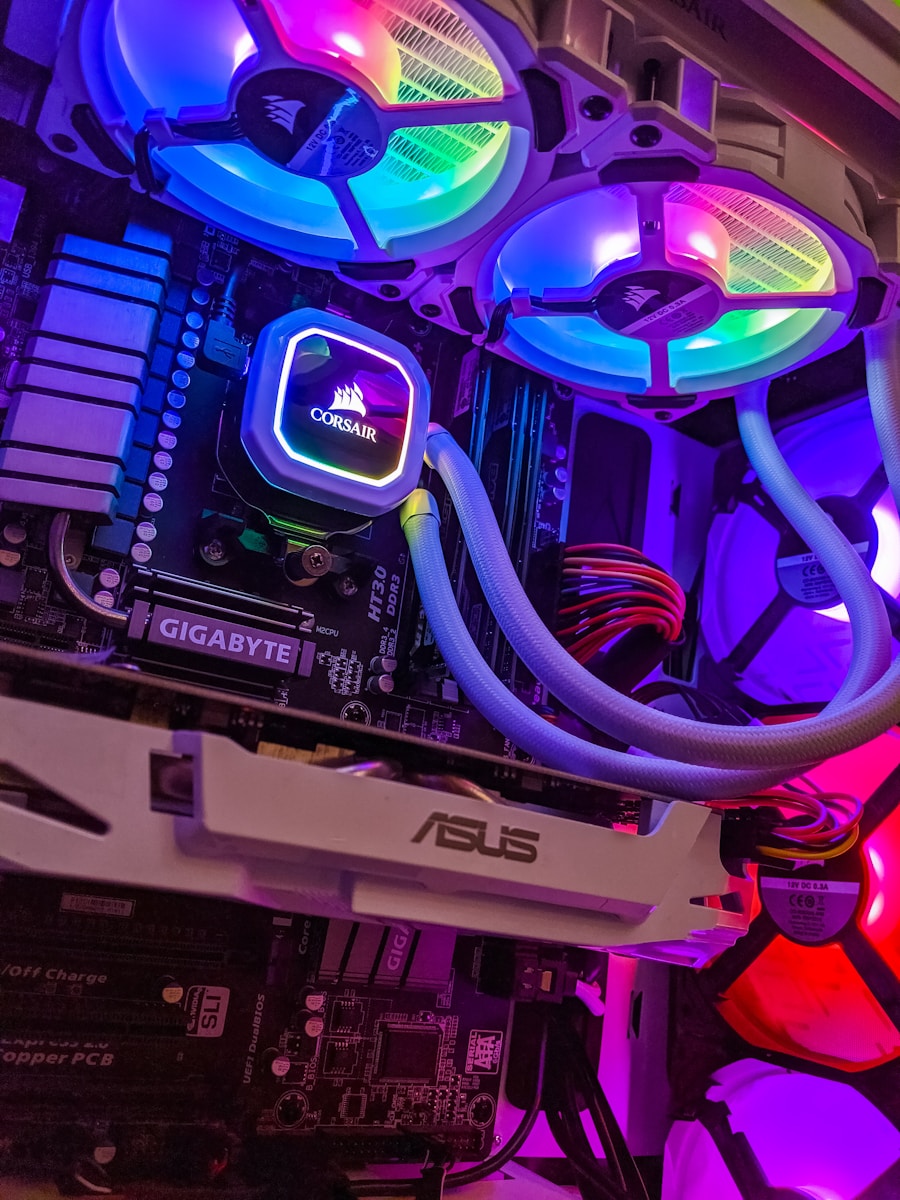Is it even possible to have a home recording studio without acoustic treatment?
Well, the truth is many artists/musicians, music producers and recording engineers started out in rooms that weren’t acoustically treated. That’s because they were recording from HOME (welcome to the 21st century)!
So, this is why EVERY one of these individuals envisions a perfectly treated recording studio.
Does that vision seem out of reach to YOU right now?
WELL, I’m willing to bet that this guide will make you rethink your “dream studio” build. If you’re willing to get your hands dirty (doing a little DIY), then it’ll be more affordable than you thought.
You can DRASTICALLY improve the sound of your room for UNDER 200$!!
Of course, the sky’s the limit when it comes to acoustic treatment… You can just as easily invest THOUSANDS of dollars to get the exact sound you’re looking for.
That’s why we’re going to work our way up to those more advanced procedures!
For now, let’s start by making sure we understand what acoustic treatment involves…
- Acoustic Treatment vs Sound Proofing
- How To Get Started With Acoustic Treatment
- Do Acoustic Panels Really Work?
- Does Acoustic Foam Really Work?
- How Much Do Acoustic Panels Cost?
- How Much Does Acoustic Foam Cost?
- Where Should I Place Acoustic Panels?
- Do You Need Bass Traps in Every Corner?
- What Does An Acoustic Diffuser Do?
- How Do You Acoustically Treat a Window?
- How Do You Make a Helmholtz Absorber?
- Can You Overdo Acoustic Treatment?
- Summary: DIY Acoustic Treatment for a Home Recording Studio
Acoustic Treatment vs Soundproofing
The first mistake most people make… Confusing acoustic treatment and soundproofing.
You probably already know this, but they’re NOT the same!
It’s pretty simple to understand though…
- Acoustic treatment improves the sound of your room
- Soundproofing keeps sound in/out of your room
They’re actually two different processes and don’t cost the same. To be more specific, soundproofing is MUCH more expensive and it’s also much more difficult to achieve.
In fact, it may not even be possible to soundproof depending on your type of dwelling.
If you want to find out more, then I suggest reading THIS article instead.
Today though, we’re focusing on ACOUSTIC TREATMENT which can actually be quite affordable depending on how much work you’re willing to put into it.
To find out how to get started, keep reading…
How To Get Started With Acoustic Treatment
Before getting started, you need to get familiar with a few concepts…
- Reflection: Some objects/materials absorb soundwaves and others REFLECT soundwaves. For example, walls and windows are especially important to consider when reducing the reflections (of sound) in your room.
- Reverberation: Depending on whom/what is in your room, it’ll affect the way soundwaves interact with one another. For example, big empty spaces will sound more spacious because there are less people/objects in the room to limit the movement of soundwaves.
- Resonance: It’s much more difficult to deal with resonance since each object/material (especially wood) resonates at certain frequencies. For example, you might notice that one particular note (usually in the bass) makes the entire room vibrate.
So, that’s essentially what we’re up against!
Now, let’s start looking at the tools we’ll be using for acoustic treatment…
- Acoustic Foam
- Acoustic Panels
- Ceiling Clouds
- Diffuser Panels
- Curtains/Blankets
- Bass Traps
- Resonators
Does that mean you’ll need ALL OF THIS to treat the acoustics of your room?
NO, but it depends on how much control you want over the sound of your room. Generally, most recording studios will start with acoustic foam in the recording booth(s) (to cover entire walls/ceilings) and acoustic panels in the mixing room.
That being said, it also depends on what you want to do in that room (record, mix, etc…).
For example, you’ll definitely want to cover most of (if not all) the surfaces of your room to record drums. DRUMS ARE LOUD which is why we want to “dampen” the entire room.
If you did the same to your mixing room though, it’d be too “dry”.
However, it really comes down to personal preference at the end of the day. I’m only sharing the “principles” of acoustic treatment with you today, so it’ll be your call once you’re done reading.
In the following sections, you’ll learn how to solve each of the acoustical problems you might be experiencing (reflection, reverberation and resonance) using each of the tools we listed.
Let’s start improving the sound of your room; one step at a time!
Do Acoustic Panels Really Work?
Acoustic panels (and ceiling clouds) have one basic function… ABSORPTION.
By installing them strategically, you’ll be controlling/limiting the reflections of your room. In other words, you don’t need to cover every square-inch of your walls/ceilings.
That being said, YES. You’ll definitely want to use acoustic panels for acoustic treatment, it’s one of the most important tools.
However, I personally wouldn’t bother if you’re using the room for sound recording.
Why? The placement of each acoustic panel and/or ceiling cloud is dependent on the “listening position”. That’s where the music producer/mixing engineer is positioned.
So, I’d personally only use acoustic panels in rooms you plan to do production and mixing.
If you want to treat a room’s acoustics for recording, you’ll want to go with acoustic foam!
Does Acoustic Foam Really Work?
It depends on the QUALITY and the THICKNESS.
Of course, any amount of acoustic treatment with acoustic foam will make a difference. It just depends how much control you want to get out of your space.
If you’ve ever seen a recording booth and/or vocal booth, you know that every square-inch is covered. That’s why we won’t be needing any acoustic panels.
However, acoustic foam has the same function as an acoustic panel… ABSORPTION.
In fact, some acoustic panels are made using acoustic foam.
That being said, you can also make your own acoustic panels using…
- Glue (I prefer spray-on glue, but you can use super glue as well).
We’ll also look at another way to make acoustic panels later. For now, let’s just finish off with acoustic foam.
YES… Acoustic foam really works because it’s using the same principle as the acoustic panel (which we already determined WORKS).
So, now that we know our options it’s time to talk about COSTS.
How Much Do Acoustic Panels Cost?
You’ve basically got THREE options when it comes to acoustic panels…
- Purchase them pre-made
- Custom Build #1
- Custom Build #2
Of course, the first option is the easiest, but also the most expensive!
I’ve already shared the recipe for “custom build #1”…
- Acoustic Foam
- Board
- Command Strips
Each panel should cost you about 80$.
It’ll cost you even less if you go with “custom build #2”, but it’s more difficult…
- Fiberglass Insulation (Roxul Safe n Sound)
- Wooden Studs/Beams
- Fabric
- Tools (staple gun, scissors, hammer, saw, drill, measuring tape and pencil)
- Hardware (wood screws and wood glue)
One of these panels should cost you about 20$.
Check out THIS video if you want more details on how to accomplish this build.
How Much Does Acoustic Foam Cost?
I highly recommend getting the highest-quality acoustic foam money can buy, but remember that you’re essentially paying per square-foot.
Purchasing in bulk will save you some money, but it can get expensive pretty quick.
To give you an idea though…
If your room was 8’ x10’, it would cost about 300$ (ceiling included) with the standard foam.
If you want the high-quality stuff, you’ll need to double or even triple that!
That being said, you might want to go with the standard foam if you’re covering an entire room, but I’d definitely invest in the thicker/high-quality foam if you’re making panels.
Now, let’s finish this initial phase of acoustic treatment with acoustic panel placement.
Where Should I Place Acoustic Panels?
If you only had TWO acoustic panels, you should place them on the “first reflection points”.
If your listening position was the center of the room, they’d be located 45 degrees in front of you on the right/left walls. To tweak the positioning to perfection, place a mirror and adjust the placement until you can see (from the listening position) the adjacent speaker in the mirror.
I created this 3D mockup to give you a better idea…
Now you also know where to place the rest of the panels.
After the first refection points, I’d focus on the back wall. The panels in the center and in the front corners are optional, but provide maximum control.
Optinally, you can also mount some ceiling clouds right above your listening position.
Do You Need Bass Traps in Every Corner?
If you want to do things right, then YES.
You need bass traps in every corner and it’s better if they span from one vertice to another.
In other words, from floor to ceiling or wall to wall.
Including bass traps into your acoustic treatment will give you more control with resonance. In essence, bass traps reduce your room’s resonant bass frequencies.
These frequencies tend to build up in hard corners.
So, it’s like we’re adding 4 faces to our cube (turning it into an octagonal prism).
It’s easy enough to find bass traps in these forms…
- Foam Panels (angular)
- Acoustic Panels (angled)
In other words, you can modify one of the acoustic panel recipes to make your own bass traps. However, I think the acoustic foam bass traps are better if you’re doing a recording booth.
So, if you’ve added some bass traps to the mix, your room should be sounding pretty good!
What about diffusers though?
What Does An Acoustic Diffuser Do?
Diffusers are definitely an additional expense and are more difficult to get right.
Instead of acoustic foam or fiberglass insulation, diffusers use a spherical surface to diffuse the sound in multiple directions.
It’s especially useful in large rooms that are covered in acoustic foam (i.e movie theaters, theaters, etc…).
Diffusers help “open up” the sound of the room.
If you want to make your own, it’s going to be more difficult. That’s why I only recommend diffusers if you’re going with some sort of kit.
For example, the same company provides you with panels, bass traps and diffusers.
I just wouldn’t use them in recording/vocal booths.
Acoustic diffusion is more of a “theatrical” thing for the listening position, not the performance itself.
How Do You Acoustically Treat a Window?
Windows have TWO problems when it comes to acoustics…
- They’re reflective
- They resonate
The first issue isn’t very difficult to solve, but the second is much more difficult to correct. However, it’s not 100% essential.
We’ll talk about resonators later, but I personally think that treating the windows with acoustic panels and/or curtains is plenty!
Of course, acoustic panels are going to be much more affordable than curtains.
On the other hand, curtains might be the best option if you don’t want to permanently block-off your windows.
Specially designed acoustic curtains though (like the ones on stages) are also FAR superior.
Alternatively, you could simply consider covering the entire room with acoustic curtains!
How Do You Make a Helmholtz Absorber?
I haven’t seen many pre-made Helmholtz absorbers, so you’ll need to get crafty.
Luckily, there’s a great forum thread HERE that provides amazing instructions!
To be honest though, I don’t think the “average Joe” needs to go this far. If you’ve got the will and the skill though, you can definitely get 100% of those resonant frequencies under control.
Essentially, a Helmholtz absorber is a type of “tuned” bass trap that targets a specific band of frequencies and suppresses them.
Think of it like EQ for your room!
That’s something that’ll definitely take your acoustic treatment to the next level and give you maximum control with windows as well.
BUT, where do we “draw the line” with acoustic treatment?
Can You Overdo Acoustic Treatment?
YES, ABSOLUTELY. It’s entirely possible that your room doesn’t sound half-bad.
If that’s the case, you can definitely overdo the acoustic treatment in regards to reflection and especially reverberation.
Of course, you can always ADD reverb in post-production.
However, some rooms are DESIGNED to sound great right out-of-the-box.
For most though, the room’s acoustics need to be improved and in some cases, a room that sounds completely “dry” is much better than one that sounds bad.
So, I’ll let you decide how much is “too much”.
For example, the reason vocal booths are completely covered with acoustic foam is so the sound source is completely isolated and clean (i.e no room tone).
Like I said… You can always add reverb later, but you can’t “undo” your actual room tone.
Summary: DIY Acoustic Treatment for a Home Recording Studio
Now, the vision of your perfectly treated home recording studio should be within reach!
If you still have questions after reading the article, feel free to leave them in the comments. I also encourage you to share your own personal experience with acoustic treatment.
To summarize though, we learned how to treat…
- Reflection
- Reverberation
- Resonance
The best place to start is to select your “base” material…
- Acoustic Panels
- Acoustic Foam
If you’re treating a mixing room, go with the panels.
If you’re treating a recording booth, go with the foam.
The next best thing you can do to your rooms is acoustics is to tame the RESONANCE.
That’s where bass traps come in!
Once you’ve done all of that, I’m sure you’ll notice a SIGNIFICANT improvement in your room’s acoustics. If you still feel the need to do more, you now know how to do it!
So, I’ll leave the rest up to you. Have fun!
Sources
https://illuminated-integration.com/blog/7-types-of-acoustic-treatments/
http://arqen.com/bass-traps-101/placement-guide/
https://gearspace.com/board/studio-building-acoustics/665657-diy-helmholtz-resonator-made-easy.html




